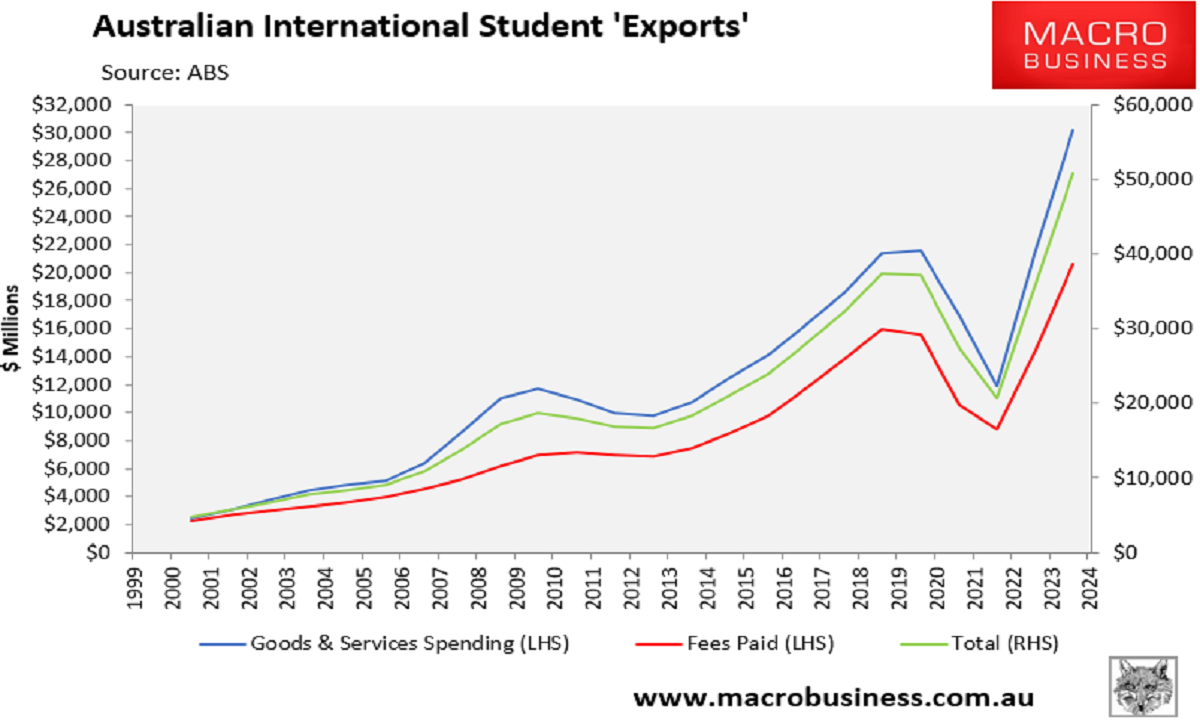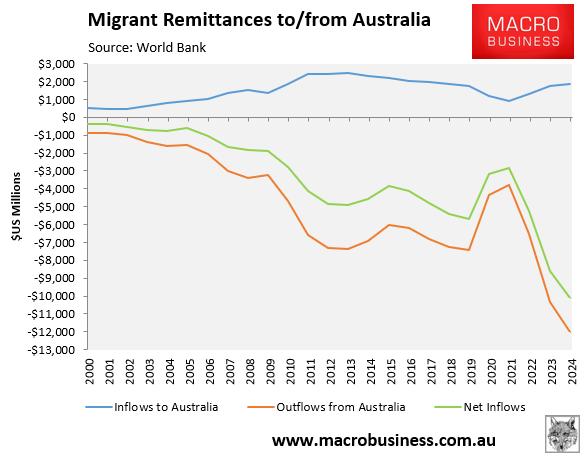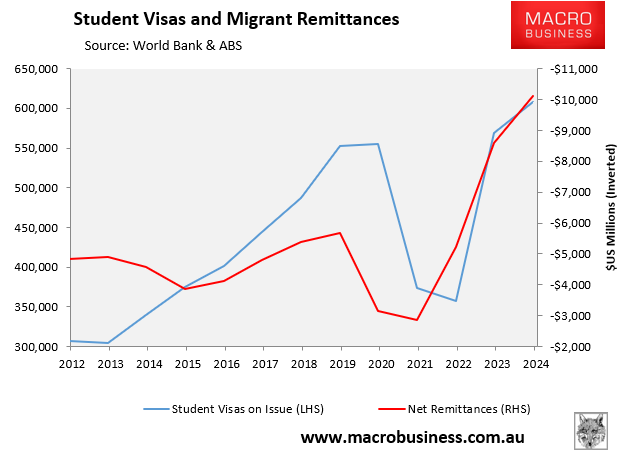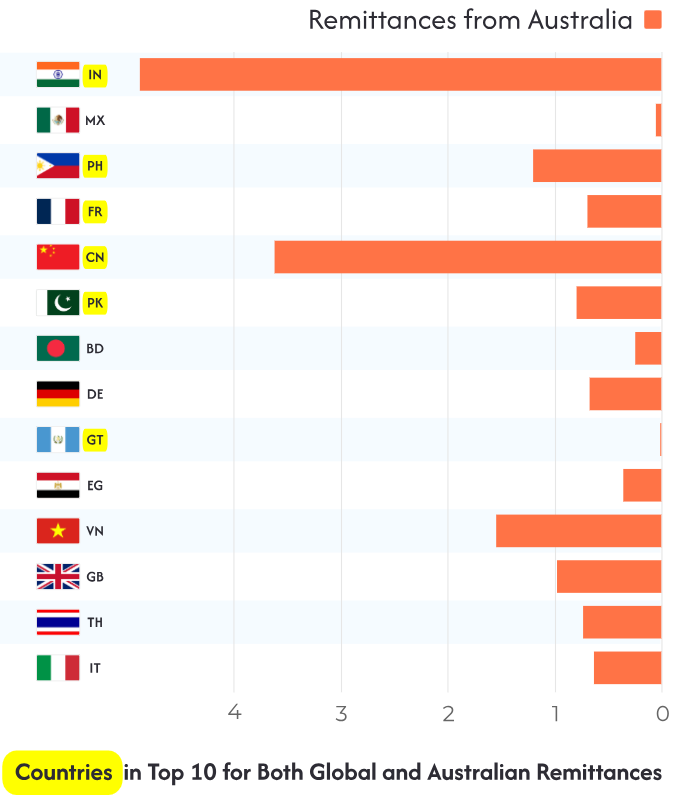International education is purported to be Australia’s fourth-largest export, valued by the Australian Bureau of Statistics (ABS) at $51 billion in 2023-24.

The ABS estimates this stunning export figure by using “an average spend estimate from Tourism Research Australia … supplemented by the addition of total expenditure on course fees”.
The ABS incorrectly classifies all spending by international students as exports, despite the fact that many students pay for their goods and services with Australian dollars earned while working in Australia.
The World Bank has released migrant remittance data for 2024, which challenges the notion that international education is Australia’s fourth largest export.
According to this data, Australia’s net remittance outflows were $US10.1 billion in 2024, or more than $A15 billion.

International students would account for a considerable portion of the remittances leaving Australia.
Indeed, the volume of net remittance outflows has closely tracked the volume of international students studying in Australia.

A new report by Money Transfer Australia, which draws on figures from the World Bank, ABS, KNOMAD, and DFAT, estimates that US$4.8 billion worth of remittances were sent to India from Australia in 2024.

Source: Money Transfer Australia
“The surge comes as Australia’s migrant population hits historic highs, fuelling unprecedented levels of money flowing back to families and communities across India”, noted Indian Link.
“With over 780,000 people of Indian origin living in Australia, remittance flows have become both a personal and economic bridge between the two nations. These funds help families cover essentials such as education, healthcare, and housing, while also boosting local economies across India”.
“Money Transfer Australia’s report highlights that migrants from India are among the most active senders of money, despite the diversity of Australia’s overseas-born population”.
“Our analysis shows that private remittances are not only an act of love and duty but also a significant driver of economic activity in recipient countries”, Russell Gous, Editor-in-Chief at Money Transfer Australia, noted.
Indian Link projects that remittance outflows to India will continue to rise as the migrant population expands in Australia, driven by international education.
“With Australia’s net overseas migration expected to exceed 1.3 million people between the 2023 and 2025 financial years, remittance flows to India are projected to grow even further in 2025. This trend reflects both the rising Indian diaspora and Australia’s economic and educational appeal for Indian professionals, students, and families”.
“As India and Australia strengthen their strategic, economic, and cultural ties through agreements like the Australia-India Economic Cooperation and Trade Agreement (AI-ECTA), rising remittances stand as a testament to the enduring bonds between the people of both nations”, Indian Link wrote.
Remittance outflows are an import since money leaves Australia.
The massive outflow of remittances should, therefore, be counted against the ABS’ fantastical $51 billion education export figure, which wrongly counts all spending by international students as an export regardless of how it is funded.
The real export figure is clearly far lower.

